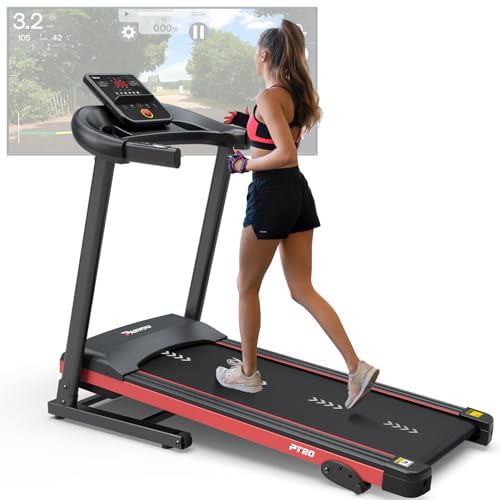Why Do So Many People Want To Know About Walking Machine?
The Rise of Manual Walking Machines: A Comprehensive Guide
In an age marked by the increasing demand for physical fitness and health care, manual walking devices have actually seen a revival in popularity. These devices use an accessible and economical way to include exercise into one's day-to-day routine. This blog site post explores the benefits, functions, comparisons, and factors to consider surrounding manual walking devices, transforming a typically neglected piece of physical fitness equipment into a cornerstone of health.
What is a Manual Walking Machine?
A manual walking machine, typically referred to as a manual treadmill, is a fitness gadget created to replicate walking without dependence on electrical power. Users move the belt forward through their own movement, making it an unique blend of cardio and strength exercise. Perfect for users of all fitness levels, this machine has gotten traction amongst those looking for a straightforward way to exercise.
Secret Features of Manual Walking Machines
Feature
Description
Source of power
Runs without electricity— ideal for homes without power outlets.
Belt System
The belt moves only when the user strolls, providing an unique workout.
Customizable Speed
Users can select their rate, assisting in a personalized workout.
Mobility
Typically lighter and much easier to keep than powered treadmills.
Sturdiness
Less moving parts cause decreased upkeep requirements.
Cost
Generally more affordable compared to motorized treadmills.
Advantages of Using a Manual Walking Machine
Cost-Efficiency: Manual walking devices tend to be more cost effective than their motorized equivalents. This characteristic makes them a great financial investment for those see king to start their physical fitness journey without breaking the bank.
Effective Cardio Workout: Because users are accountable for moving the belt, manual makers can offer a more intense workout. The more difficult you press, the higher strength you accomplish.
Muscle Engagement: Users not only work on their cardiovascular fitness however also engage core muscles, resulting in improved stability and strength.
Low Impact: Unlike working on tough surface areas, a manual walking machine lessens joint pressure, making it appropriate for people recuperating from injuries or those with joint issues.
Simpleness and Portability: The lack of complex settings and the compact style make it easy to incorporate a manual walking machine into any area.
Comparing Manual Walking Machines to Motorized Treadmills
Spec
Manual Walking Machines
Motorized Treadmills
Source of power
Non-electric
Electric (requires power)
Speed Control
User-defined
Predefined settings readily available
Expense
Typically lower
Usually higher
Portability
More portable
Heavier, less portable
Upkeep
Low upkeep
Regular upkeep may be needed
Exercise Variety
Limited (walking only)
Wide range (incline, programs)
How to Incorporate a Manual Walking Machine into Your Fitness Routine
In order to optimize the benefits of a manual walking machine, one ought to tactically plan their workout sessions. Here's an easy guide on how to do so.
Step-by-Step Incorporation
Warm-Up (5-10 minutes): Start with a mild walk at a low rate to prepare your body for a workout.
Interval Training (15-20 minutes):
- Alternate between a brisk walk and a slower speed. For instance, walk at a high strength for 1 minute, followed by 2 minutes of moderate walking. Repeat for 15-20 minutes.
Steady-State Jogging (10-20 minutes): Once comfy, integrate durations of running to increase cardiovascular fitness.
Cool Down (5-10 minutes): Gradually decrease your pace to bring your heart rate back to a regular level.
Post-Workout Stretching: Engage in stretching exercises to enhance flexibility and avoid discomfort.
Additional Tips for Effective Workouts
- See Your Form: Keep your posture upright and engage your core while walking.
- Use Resistance Bands: To add more strength-training elements, attach resistance bands while walking.
- Stay Hydrated: Ensure appropriate water consumption in the past, during, and after workouts to help recovery.
FAQs About Manual Walking Machines
1. Are manual walking devices ideal for everybody?
Yes, manual walking machines accommodate varied fitness levels, making them appropriate for newbies, intermediates, and even advanced users. Nevertheless, individuals with extreme injuries or health conditions need to seek advice from a doctor before beginning any new exercise program.
2. How typically should I use a manual walking machine?
For optimal outcomes, goal for a minimum of 150 minutes of moderate aerobic activity every week, which can be quickly attained with regular sessions on a manual walking machine.
3. Can I slim down utilizing a manual walking machine?
Absolutely! Paired with a balanced diet plan, consistent usage of a manual walking machine can add to weight reduction through increased calorie expenditure.
4. What is the difference in between a manual walking machine and an elliptical fitness instructor?
While both machines offer a cardiovascular exercise, a manual walking machine focuses primarily on walking. An elliptical can supply both upper and lower body workout with less effect on the joints.
5. Exist any safety issues connected with using a manual walking machine?
Like any physical fitness devices, correct usage is paramount. Users ought to keep their balance and prevent interruptions while walking to prevent mishaps.
Manual walking makers offer an exceptional option to standard electric treadmills, fulfilling the diverse requirements of fitness enthusiasts worldwide. Their price, mobility, and effectiveness make them a viable alternative for anyone looking for an easy yet demanding method to preserve fitness. By comprehending the benefits, distinctions from motorized treadmills, and how to best incorporate them into exercises, individuals are better equipped to make an educated decision about their health and wellness journeys.
Whether you're new to physical fitness or looking for an effective way to remain active, manual walking devices offer a pathway to a healthier way of life. As more individuals seek sustainable physical fitness options, these makers are poised to stay prominent fixtures in homes and fitness centers alike.
